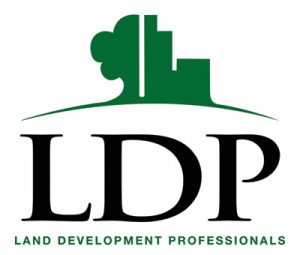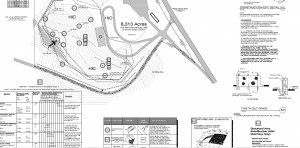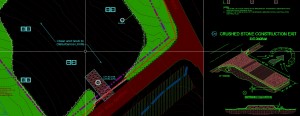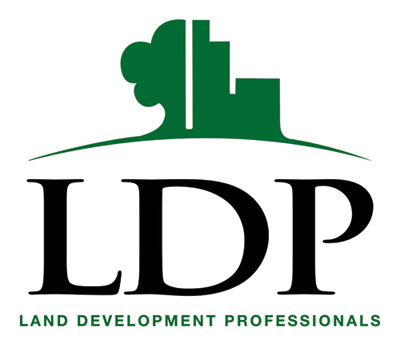Erosion and Sediment Control Plan

 The sand and gravel general permit requires the permittee to develop, maintain, and comply with their erosion and sediment control plan (ESCP) as a part of the Site Management Plan. The ESCP must contain information on all the best management practices (BMPs) and structures that control Type 2 stormwater.
The sand and gravel general permit requires the permittee to develop, maintain, and comply with their erosion and sediment control plan (ESCP) as a part of the Site Management Plan. The ESCP must contain information on all the best management practices (BMPs) and structures that control Type 2 stormwater.
Type 2 Stormwater means stormwater from:
Portions of a site where mining has temporarily or permanently ceased;
Portions of a site with exposed soils, cleared in preparation for mining or other industrial activity.
If type 2 stormwater enters areas associated with type 3 stormwater, it becomes type 3 stormwater.
Properly managed, type 2 stormwater will typically not require treatment. However, type 2 stormwater cannot be allowed to discharge to surface water if it exceeds the turbidity limit. Visual monitoring is required and if turbidity is a problem, treatment may be required. The information below provides general guidance on permit requirements and useful information for permit compliance. It does not examine every aspect of permit requirements identified under Special Condition S5.a. Erosion and Sediment Control. The permittee is responsible for reading the full text of the permit and complying with all applicable permit requirements.
Permit Requirements
The ESCP must include information about all the best management practices (BMPs) that are used to control type 2 stormwater and prevent erosion from adding sediment to the stormwater. BMPs must include:
Stabilization Practices:
Stabilization practices help prevent erosion that contributes sediment to stormwater. Typical stabilization practices include seeding, mulching, geotextiles, sod stabilization, vegetative buffer strips, protection of trees, preservation of mature vegetation, and decreasing slope angles or lengths.
 Structural Practices:
Structural Practices:
Structural BMPs divert flows from exposed soils, store flows, or otherwise limit runoff and the discharge of pollutants from exposed areas of the site. Such practices may include silt fences, earth dikes, drainage swales, sediment traps, check dams, subsurface drains, pipe slope drains, level spreaders, storm drain inlet protection, rock outlet protection, reinforced soil retaining systems, gabions, and sediment basins.
Inspections:
At active mine sites and all asphalt batch and concrete batch plants, you must conduct a visual inspection of all onsite erosion and sediment control measures at least once every seven days, and within 24 hours after any storm event of greater than 0.5 inches of rain per 24 hour period. Keep a log of these visual inspections, recording the date and pertinent observations (e.g., 12/7/99 – very heavy storm but no significant turbidity in runoff).
For inactive mine sites, a Registered Professional Engineer or equivalent (e.g., Certified Professional Erosion and Sediment Control Specialist) must conduct an inspection every three years to determine if the site is in compliance with permit conditions. Although inactive mining sites are not subject to the same monitoring and reporting requirements as active mine sites, BMPs must be in place and adequate to comply with permit conditions. For example, any discharge to surface water must comply with the turbidity limit.
Typical Best Management Practices (BMPs)
Temporary and Permanent Seeding:
Exposed soil is highly subject to erosion. Seeding the area to develop a vegetative cover can significantly reduce erosion.
Protect Areas of Exposed Soil:
Divert runoff from exposed soils. Dike or ditch the runoff, place a berm around the exposed area, or convey drainage through pipes or culverts. Runoff can be directed to a grass lined swale for infiltration.
Control Runoff Velocity:
Slow down runoff to minimize its erosive capacity. Vegetative buffers, slope management, check dams, and filter fabric fences are a few of the ways that you can impact runoff velocity.
Minimize Channel Erosion:
Use grass lined channels to convey water through the site. If grass alone cannot control erosion, consider the use of riprap. A pipe slope drain may also be used to move water down a steep slope.
Trap Sediment:
Barriers and temporary ponds may be used to trap sediment. Straw bales, brush, and silt fences may be used as barriers to intercept sheet flow or low level, low energy channel flow and reduce the sediment load. Temporary ponds may also be used to trap sediment. These measures do not typically provide adequate control of turbidity and should not discharge directly to surface water.
Resource Materials
Best Management Practices for Reclaiming Surface Mines in Washington and Oregon. Available from the Washington Department of Natural Resources, Division of Geology and Earth Resources, (360) 902-1450. Although geared to mine reclamation, this document provides many useful examples of site management that will minimize erosion and control erosion.
Stormwater Management Manual for the Puget Sound Basin – Volume II Erosion and Sediment Control. This is a very good source of information on preventing erosion and controlling sediment in runoff. There are many useful management practices included in this volume. This document will be replaced by an updated version that will likely be available by July of 2000. The updated version will be a statewide manual: Stormwater Management in Washington State – Volume II Construction Stormwater Pollution Prevention. Although titled construction stormwater, the contents are highly applicable to erosion and sediment control requirements of the sand and gravel general permit.
Periodic Plan Review
The plan is not intended to just sit on the shelf after completion. The permit requires periodic review and updates to keep the plan current. The plan should also be used during employee training. The plan is intended to become a part of doing business at a site and to be a living document.
For more information about Erosion and Sediment Control Plans (ESCP), contact LDP today.
Contact Us
